Flowers That Start With J encompass a diverse array of botanical wonders, each possessing its own unique charm and beauty.
Among these, Jasmine stands out, renowned for its exquisite fragrance and delicate blossoms, which symbolize love and purity. Jacaranda captivates with its stunning lavender-blue blooms, transforming landscapes into dreamy vistas. Johnny Jump Up, with its cheerful appearance and edible blooms, adds a playful touch to gardens and culinary creations alike.
Flowers That Start With J carry significance beyond their beauty, serving as vessels of symbolism and nostalgia. Whether nestled in gardens, arranged in bouquets, or scattered across wild meadows, their presence evokes a tapestry of emotions and memories.
Now, let’s embark on a journey to discover 35 beautiful flowers that start with the letter J by continuing to read the article below.
Different Types of Flowers That Start With J
Jewelweed (Impatiens capensis)
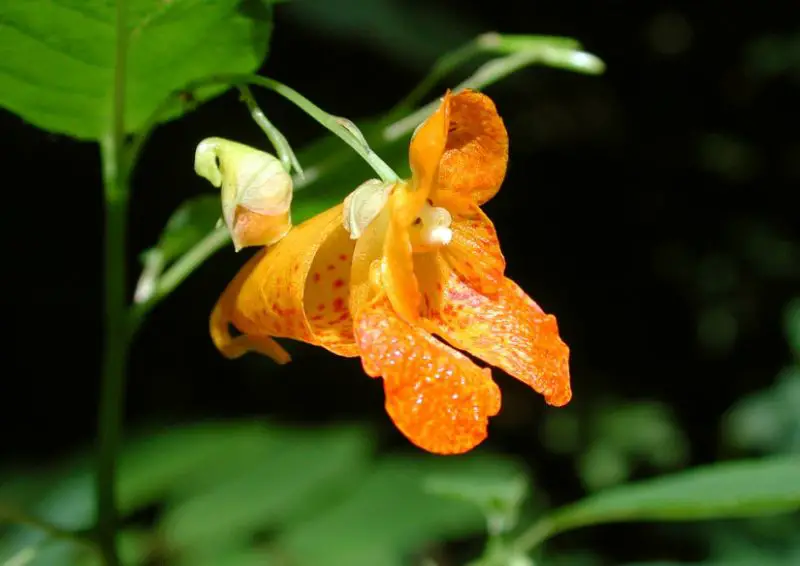
Jewelweed, sometimes called Touch-Me-Not, is a lovely orange or yellow wildflower. It grows well in damp conditions and is well-known for its traditional application in treating poison ivy and stinging nettle-related skin irritations. Jewelweed is a useful plant for people who enjoy being outside because of its succulent stems, which are said to contain liquids that relieve itching.
Jerusalem Sage (Phlomis)

Perennial sage is a shrub that resembles small snapdragons, with whorls of yellow or purple flowers. It adds beauty to sunny gardens and Mediterranean-inspired settings with its distinct form and bright blossoms. Because Jerusalem sage tolerates drought well, it gives the garden both beauty and hardiness.
Jaborosa (Jaborosa integrifolia)
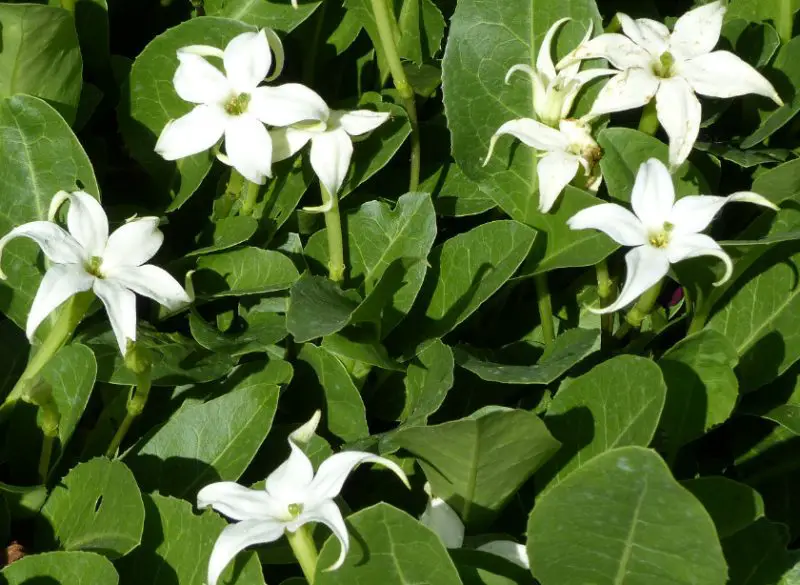
The genus Jaborosa contains a number of species that are distinguished by their bell-shaped blooms and eye-catching foliage. These plants are indigenous to South America, where they grow well in a variety of environments, including forests and grasslands. Jaborosa flowers are available in a variety of hues, such as white, purple, or yellow.
Jerusalem Artichoke (Helianthus tuberosus)

A distinctive flowering plant in the sunflower family is the Jerusalem artichoke. Its essential beauty is beneath the soil, although it produces happy yellow flowers atop tall branches. The edible tubers of the Jerusalem artichoke are prized for their crisp texture and nutty, sweet flavor. Jerusalem artichokes are a delicious and nutritious food that is high in fiber and nutrients.
Japanese Wisteria (Wisteria floribunda)

With its fragrant flower clusters that cascade down, Japanese Wisteria (Wisteria floribunda) is a charming vine that adds elegance to gardens. The blooms, which come in purple, pink, or white hues, provide an enchanting visual display and fill the air with a pleasant scent. Japanese wisteria lends an air of refinement and romance to outdoor areas. It is frequently trained to grow on arbors, pergolas, or trellises.
Jatropha
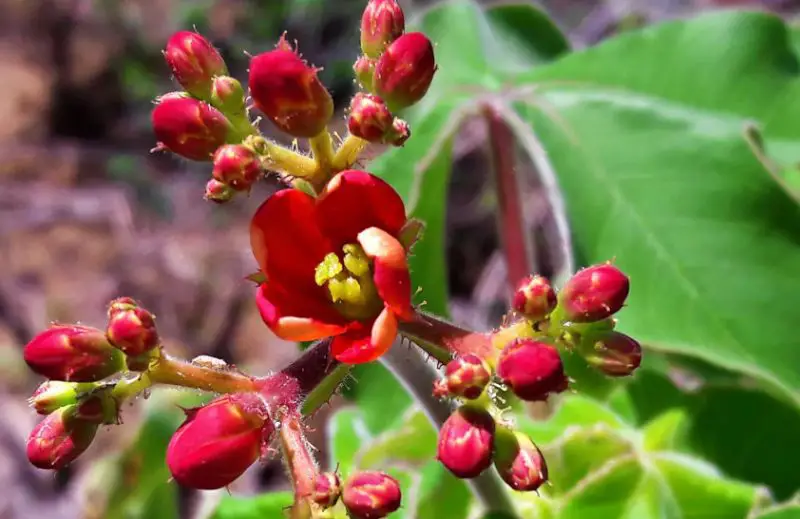
The flowering plant genus Jatropha includes a number of species that are prized for both their decorative and therapeutic qualities. Jatropha plants, which are native to tropical and subtropical areas, are well-known for their colorful leaves and clusters of tiny, star-shaped blooms that come in red, pink, or white hues.
Jack-in-the-Pulpit (Arisaema triphyllum)
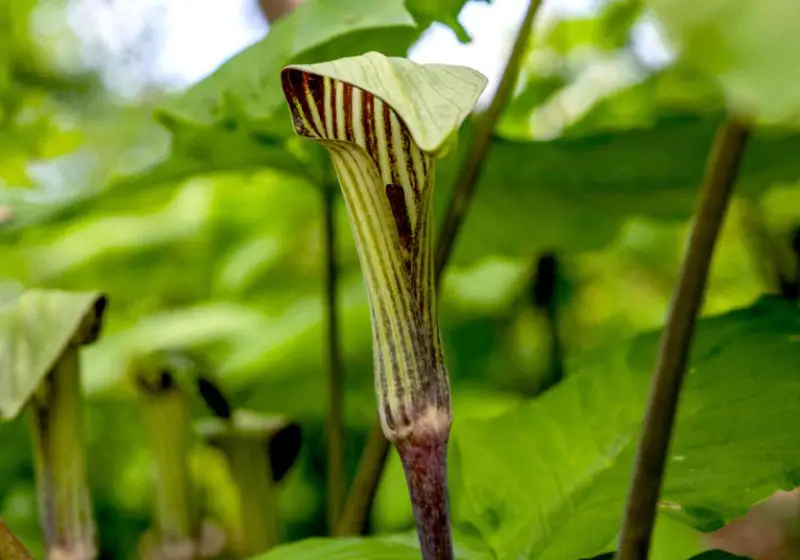
Jack-in-the-Pulpit is a distinctive plant in the forest; it draws attention with its fascinating appearance. The center spadix, often known as “Jack,” is surrounded by the pulpit-like spathe of the flower. This plant, which is native to North America, infuses shady gardens with a sense of mystery and wonder, drawing onlookers to notice its peculiar shape and subtle beauty.
Japanese Iris (Iris ensata)
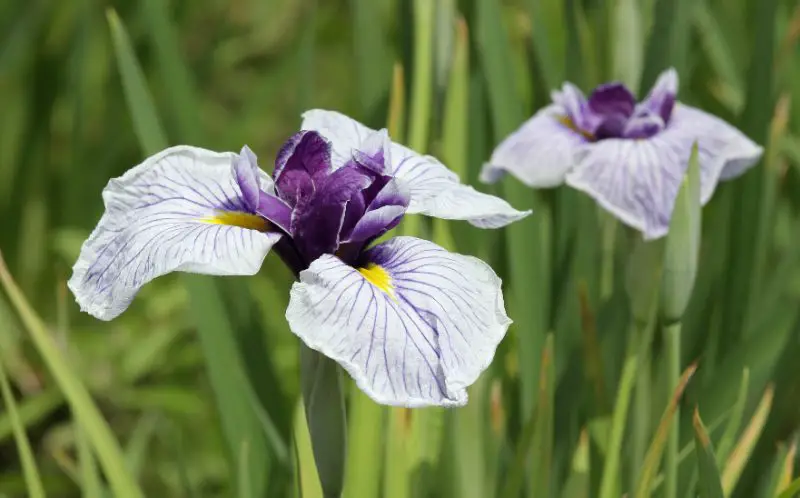
The Japanese Iris is a beautiful kind of iris distinguished by its opulent, enormous blossoms. The Japanese Iris, which comes in blue, purple, pink, or white hues, lends grace and elegance to water gardens and other damp spaces. This iris species is highly prized in Japanese culture and frequently used in traditional gardens and floral arrangements because of its unique blooms and lovely sword-like foliage.
Jonquil (Narcissus jonquilla)
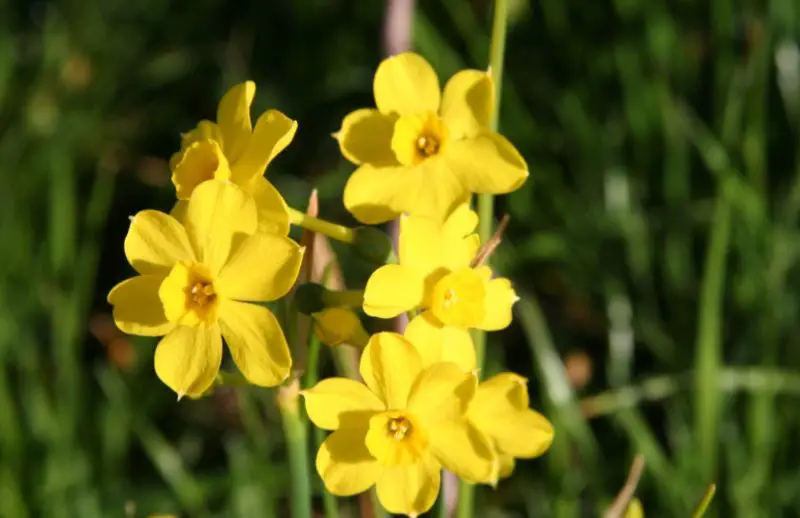
The fragrant jonquil (Narcissus jonquilla) flowering bulb, with its clusters of petite, golden-yellow blooms, heralds the arrival of spring. This lovely member of the narcissus family fills gardens with a pleasant aroma that makes them seem cheery and welcoming. Because of their delicate flowers, jonquils are prized for representing rebirth, renewal, and the pleasures of seasonal transitions.
Jungle Flame (Ixora coccinea)
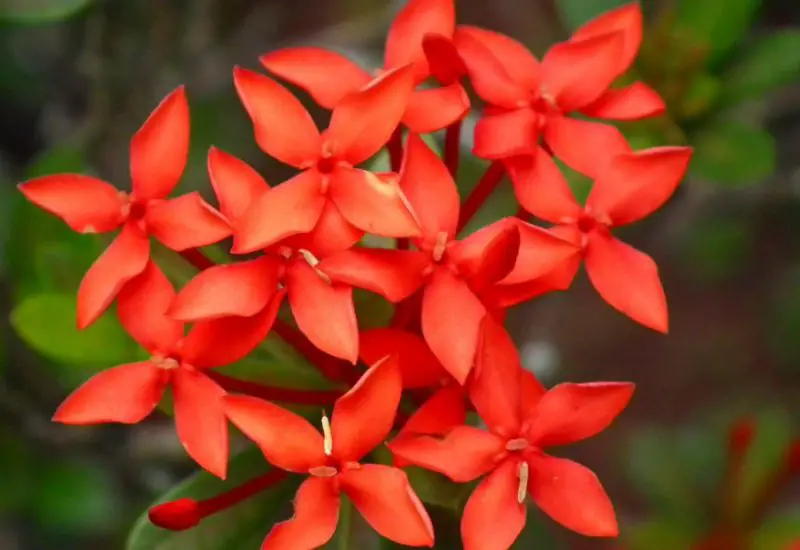
The tropical shrub Jungle Flame brightens gardens with its eye-catching clusters of red, orange, pink, or yellow blooms. These vivid blossoms, which resemble flames, give landscapes an exotic feel and draw butterflies and hummingbirds. Because it grows well in warm regions, the Jungle Flame is a popular plant for tropical and subtropical gardens.
Jacobinia (Justicia carnea)
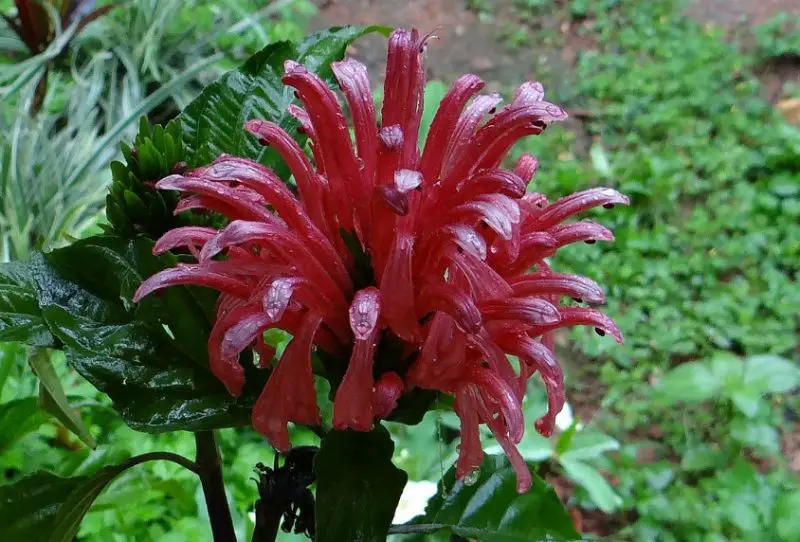
The tropical evergreen shrub Jacobinia, commonly called Brazilian Plume or Flamingo Flower, is a member of the Acanthaceae family. It comes from South America, especially Brazil, and is prized for large, beautiful clusters of tubular flowers. These flowers provide an eye-catching show because of their vivid pink, red, or white hues.
Jaumea
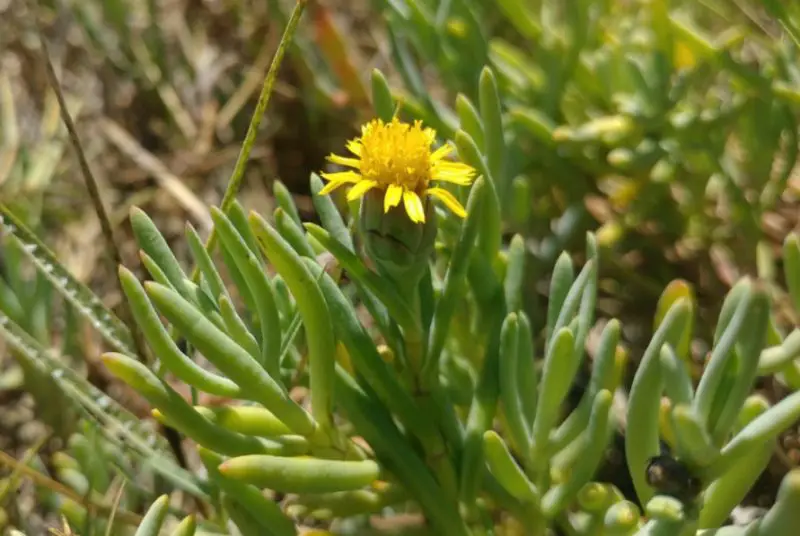
The genus Jaumea comprises blooming plants that grow in coastal environments and salt marshes. These plants are ideal for gardens by the sea or in places with saline soil because of their tiny, daisy-like blossoms. Because of their ability to tolerate high salt concentrations and challenging coastal environments, jaumea species enhance the resilience and beauty of coastal environments.
Johns Wort (Hypericum)
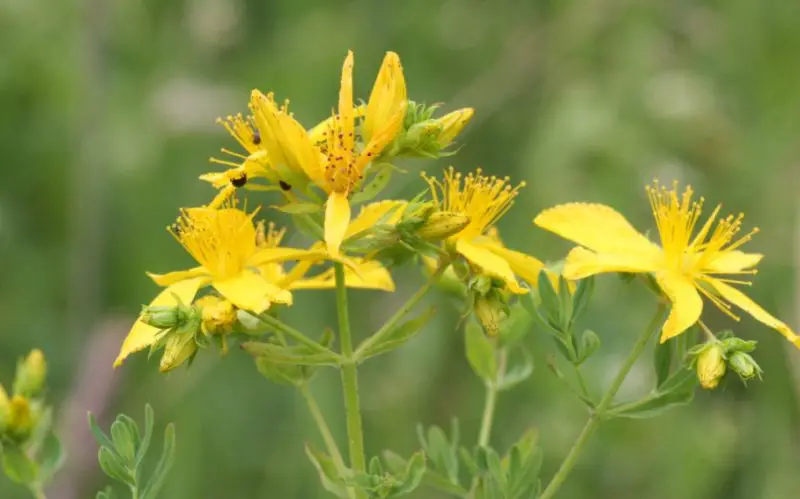
Numerous species of flowering plants of the genus Johns Wort are recognized for their therapeutic qualities. These vivid yellow-flowered plants are thought to offer anti-inflammatory and antidepressant properties. They enhance the aesthetic appeal and perhaps the health advantages of gardens or natural settings.
Jasione (Sheep’s-bit)
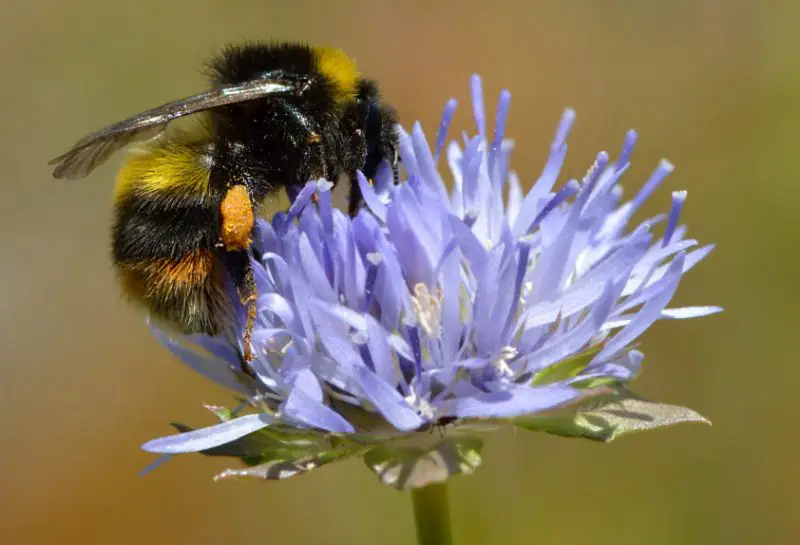
A genus of flowering plants called Jasione features globe-shaped flower clusters that are colored blue or purple. These pretty blooms are great for rock gardens or wildflower meadows, and they draw bees and butterflies.
Jade Plant (Crassula ovata)
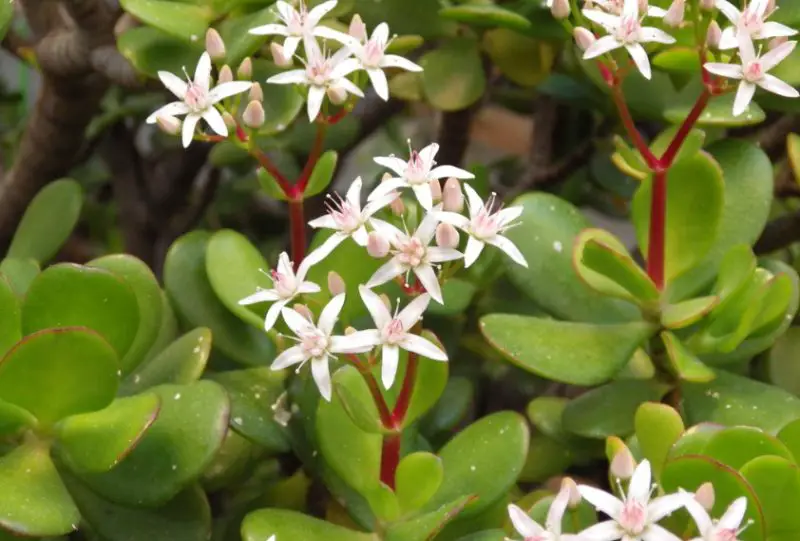
The succulent jade plant is distinguished by its tiny, star-shaped blooms and succulent, oval-shaped, meaty leaves. It is a common houseplant that represents wealth and luck. Jade plants are a beautiful and uplifting addition to interior spaces because of their resilience and ease of maintenance.
Jugwort (Eupatorium perfoliatum)
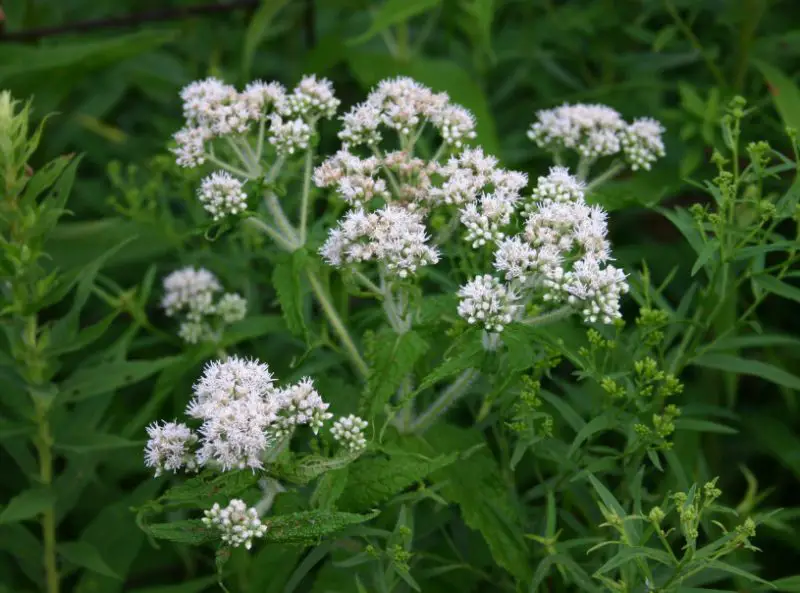
A tall perennial herb with clusters of tiny, fluffy white blooms, mugwort is also called boneset. It has long been used to treat fever and respiratory conditions and is prized for its therapeutic qualities. Jugwort is a useful addition to native plant gardens because of its eye-catching blossoms and capacity to draw butterflies and bees.
Jackmani Clematis (Clematis jackmanii)
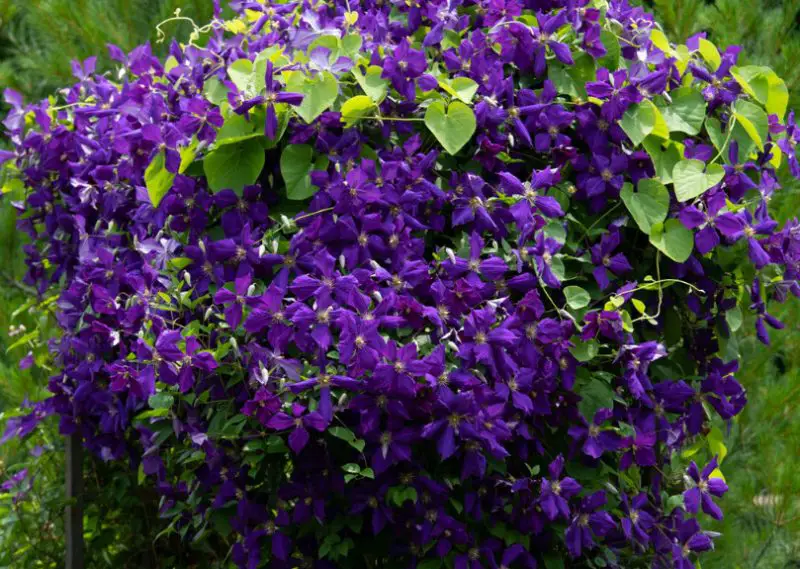
The robust climbing vine Jackmani Clematis is well-known for its enormous, rich purple blossoms. When these gorgeous blooms are trained on arbors, walls, or trellises, they produce a striking display. A well-liked option for enhancing garden landscapes with vertical interest and brilliant color is Jackmani Clematis.
Juncus
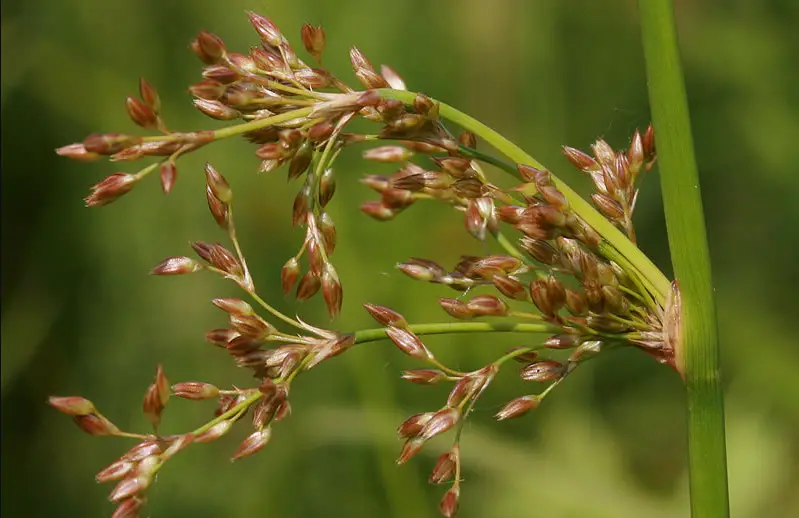
Rushes, or juncus, are perennial grass-like plants that grow well in swampy or damp environments. Juncus plants feature unusual inflorescences, or flower clusters, which improve wetland environments even though they don’t have regular flowers. Their existence helps maintain the ecological balance by giving different organisms a place to live and food.
Jumpseed (Persicaria virginiana)
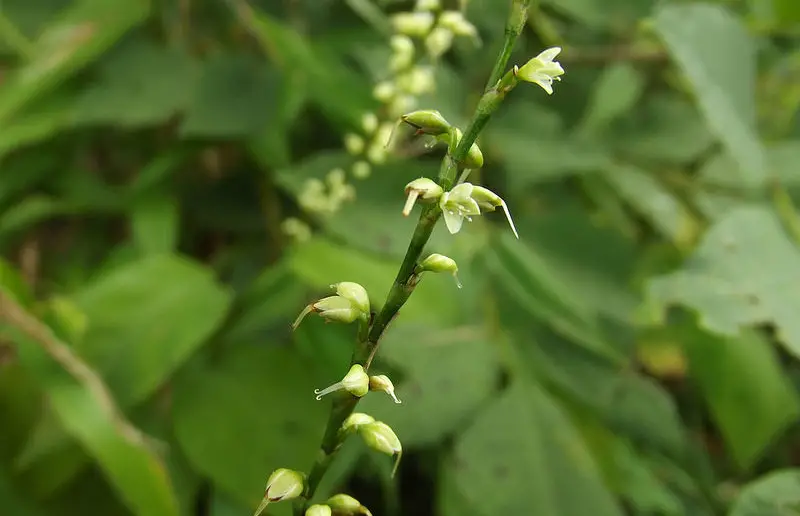
A herbaceous perennial plant that thrives in damp environments, jumpseed is often referred to as Virginia knotweed. Bees and butterflies are drawn to its delicate spikes of tiny pink or white flowers. Jumpseed gets its name from the way it ejects its seeds when it feels threatened, which adds a little of mystery to its existence in gardens.
Jasmine (Jasminum)
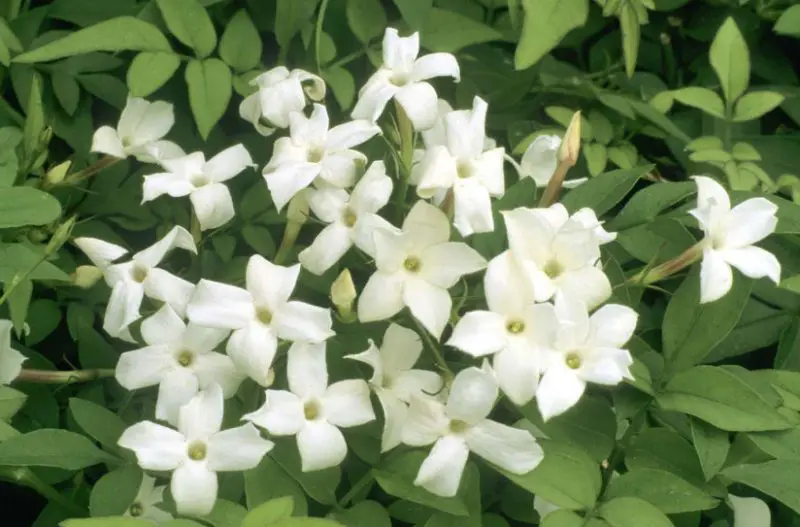
Jasmine captivates with its delicate allure and mesmerizing scent. Adored for its small, white or yellow blossoms, it embodies sentiments of love, purity, and sensuality. Whether gracing perfumes, teas, or sacred rituals, its fragrance enchants. With its soothing aroma, jasmine fosters tranquility in gardens, homes, and therapeutic settings, beckoning to the heart and soul.
Jacaranda (Jacaranda mimosifolia)
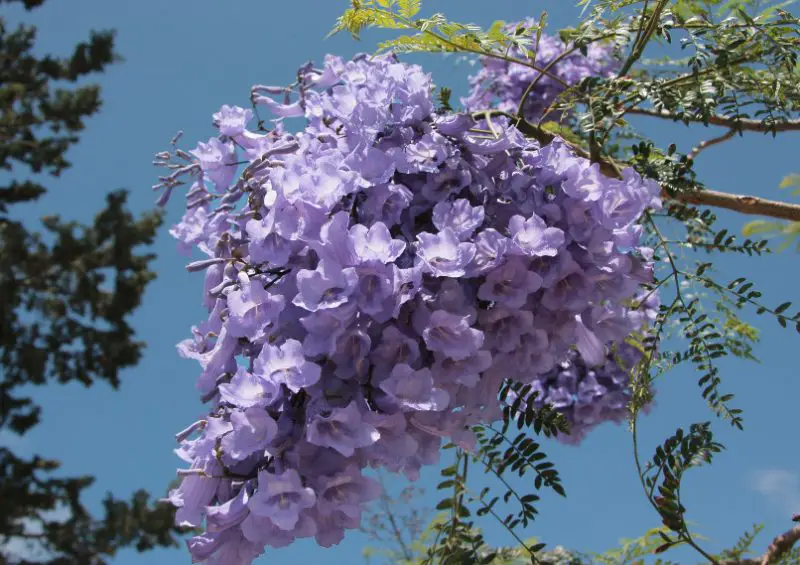
The jacaranda tree is a towering tree that has captivating allure with its trumpet-shaped, lavender-blue blossoms. Its profusion of blossoms creates a beautiful sight, enveloping the branches in a sea of vivid colors. Landscapes become beautiful vistas during the blossoming season, adding a feeling of wonder and magic to the surroundings.
Johnny Jump Up (Viola tricolor)
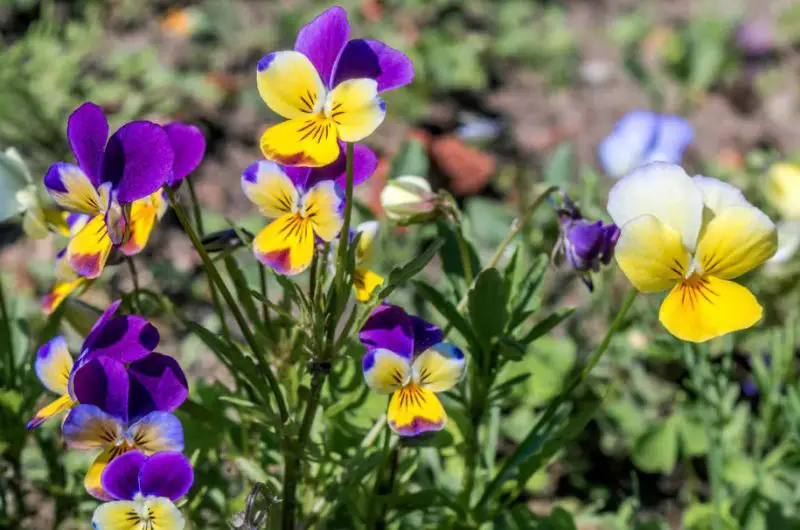
Johnny Jump Up, sometimes called Heartsease or Wild Pansy, is a pretty small flower with a beautiful appearance that makes people happy. It has tiny, “smiling” flowers with white, yellow, and purple tones. Not only is Johnny Jump Up a beautiful addition to gardens, but it can also be eaten. It is frequently used as a garnish or in salads, enhancing the taste and appearance of food preparations.
Jupiter’s Beard (Centranthus ruber)
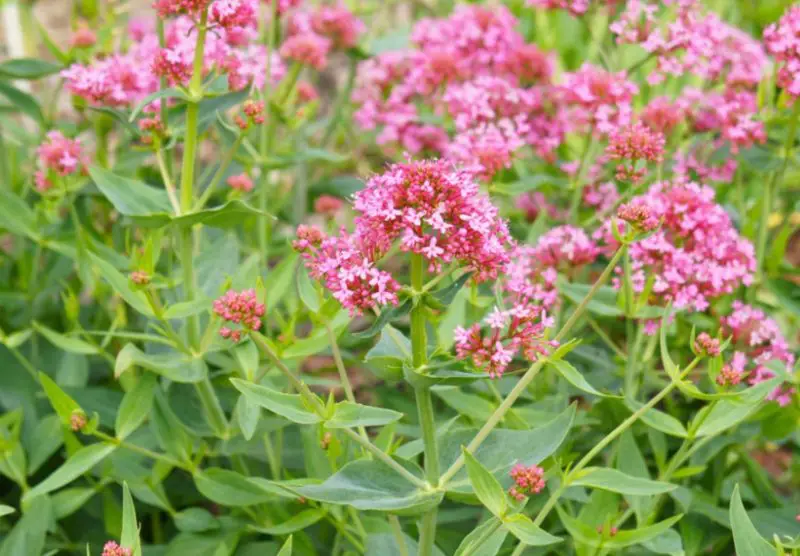
Resilient and perennial, Jupiter’s Beard is prized for its clusters of tiny, star-shaped pink, crimson, or white blooms. Gardeners love it for its brilliant blooms and compact, bushy shape. Jupiter’s Beard attracts butterflies, bees, and other beneficial insects to the garden, acting as a pollinator magnet.
Jacob’s Ladder (Polemonium caeruleum)
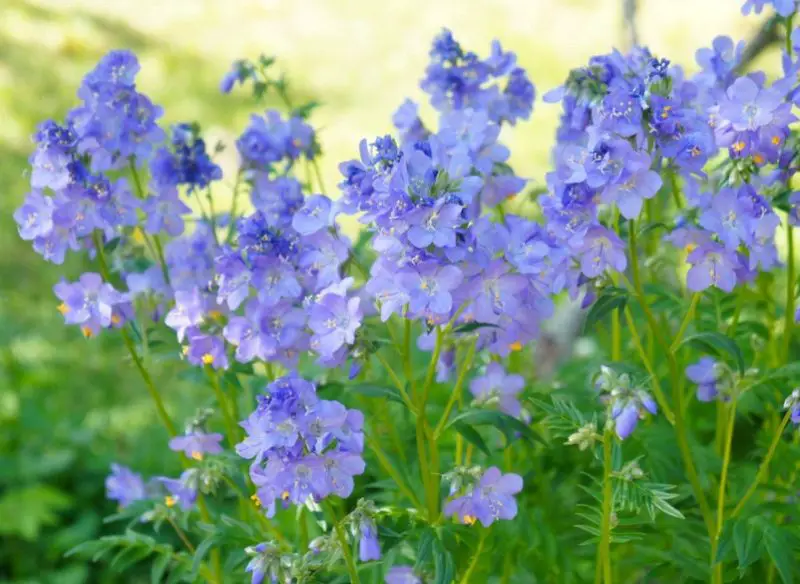
An elegant perennial, Jacob’s Ladder has delicate clusters of blue-hued bell-shaped blooms. Its distinctive arrangement of ladder-like leaves enhances its attractive appearance. This shade-loving plant brings beauty and tranquility to garden beds, borders, and naturalized areas. It grows well in wooded regions.
Japanese Anemone (Anemone hupehensis)
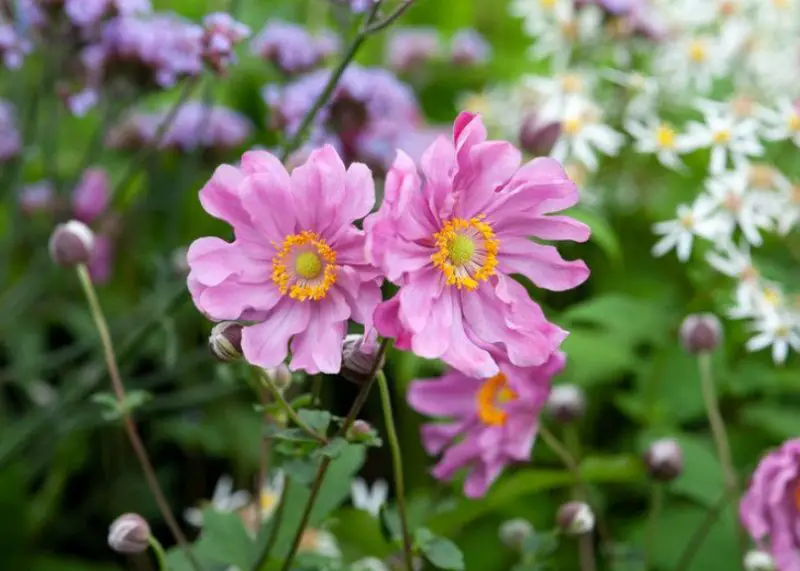
The delicate, cup-shaped pink or white blossoms of the Japanese anemone captivate. Bees and butterflies are drawn to the nectar-rich blooms of these late-season bloomers, which also lend elegance and beauty to gardens. Japanese anemone is a popular choice for both formal and casual landscapes since it is a sign of protection and expectation.
Jupiter’s Distaff (Centaurea montana)
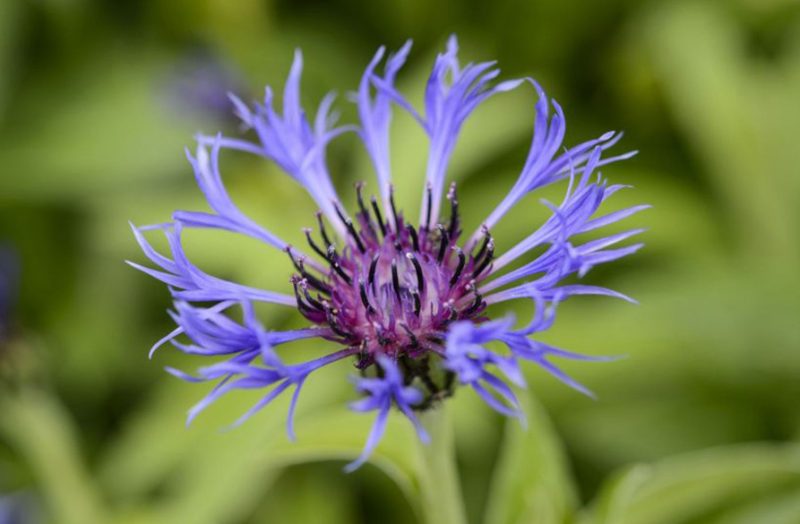
Perennial cornflowers, or Jupiter’s Distaff, are named for their vivid blue or purple blooms that resemble pincushions. This hardy perennial lends whimsicality and playfulness to meadowscapes and cottage-style gardens. Jupiter’s Distaff enhances the biodiversity of the garden by drawing butterflies and providing important nectar for pollinators.
Joe Pye Weed (Eutrochium purpureum)
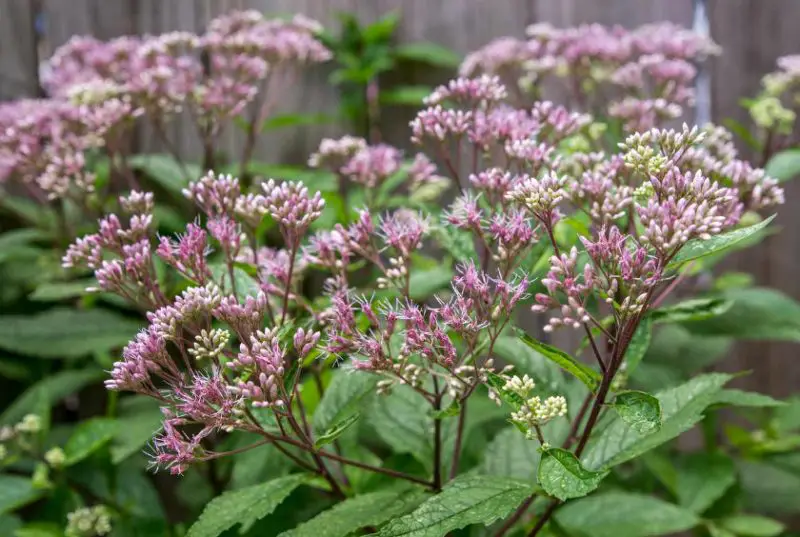
Joe Pye Weed is a magnificent natural perennial with towering stems bearing clusters of mauve-pink blooms. This eye-catching plant attracts bees and butterflies, which helps maintain the garden’s natural equilibrium. Joe Pye Weed enhances borders, meadows, and naturalized spaces with its architectural presence and tolerance for wetland ecosystems.
Japanese Cherry Blossom (Prunus serrulata)
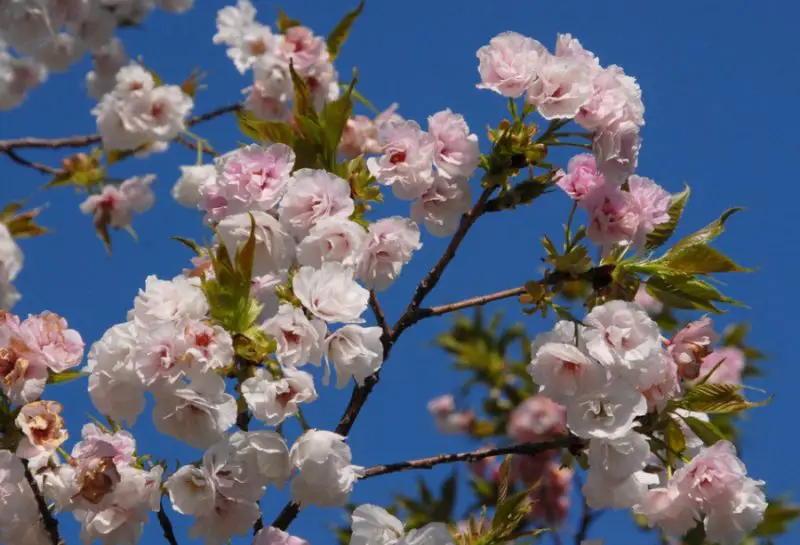
Deeply ingrained in Japanese culture, the Sakura blossom symbolizes the fleeting essence of existence. In the spring, the cherry trees are covered in these tiny pink or white flowers, which make for a magical sight. Sakura festivals honor the fleeting splendor of Japanese cherry blossoms, which stand for beauty, rebirth, and the impermanence of life.
Jade Vine (Strongylodon macrobotrys)
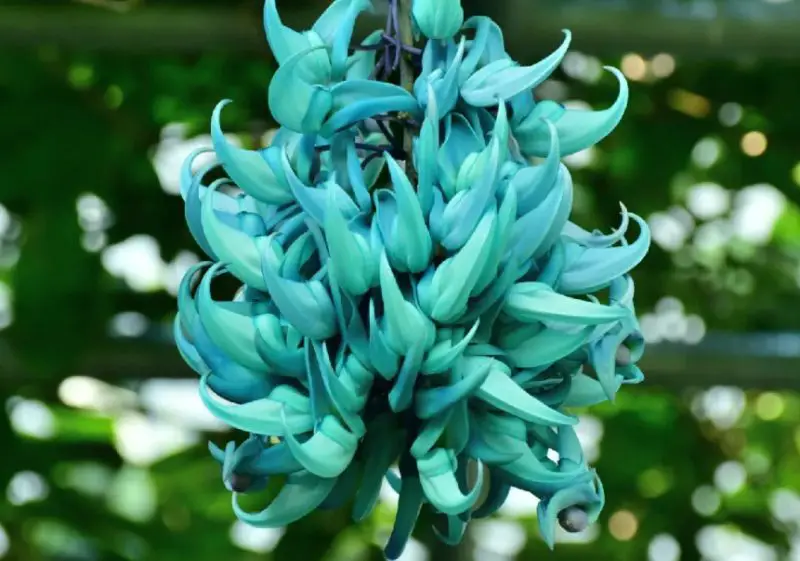
The stunning turquoise or jade-green blossoms of the Jade Vine are a remarkable tropical climber that captures attention. Garden and arbors are given an exotic touch by these long cascading clusters of pendulous blossoms. Born in the Philippines, the exquisite and uncommon jade vine is highly valued as a collector’s item due to its exceptional beauty.
Read More:






